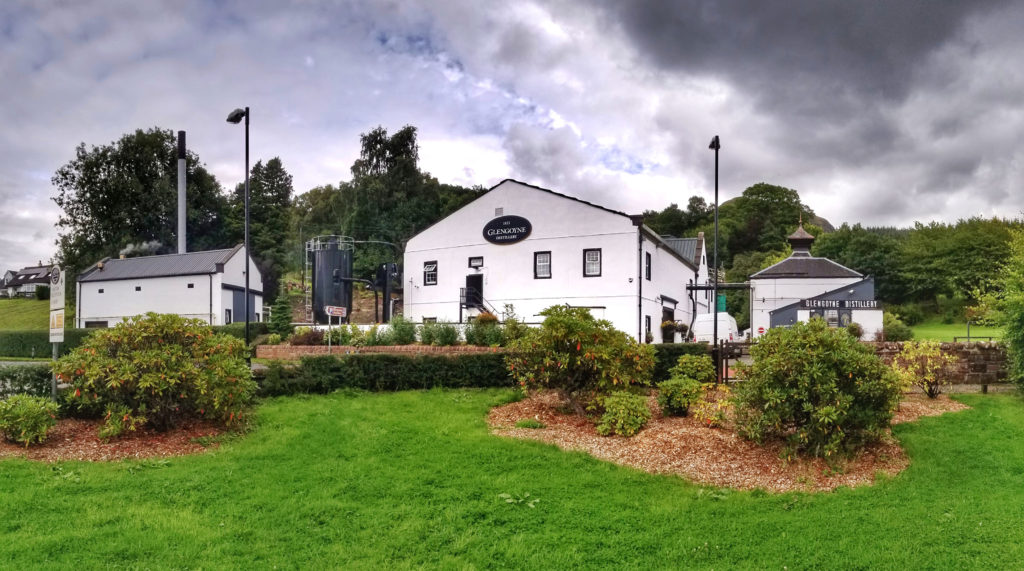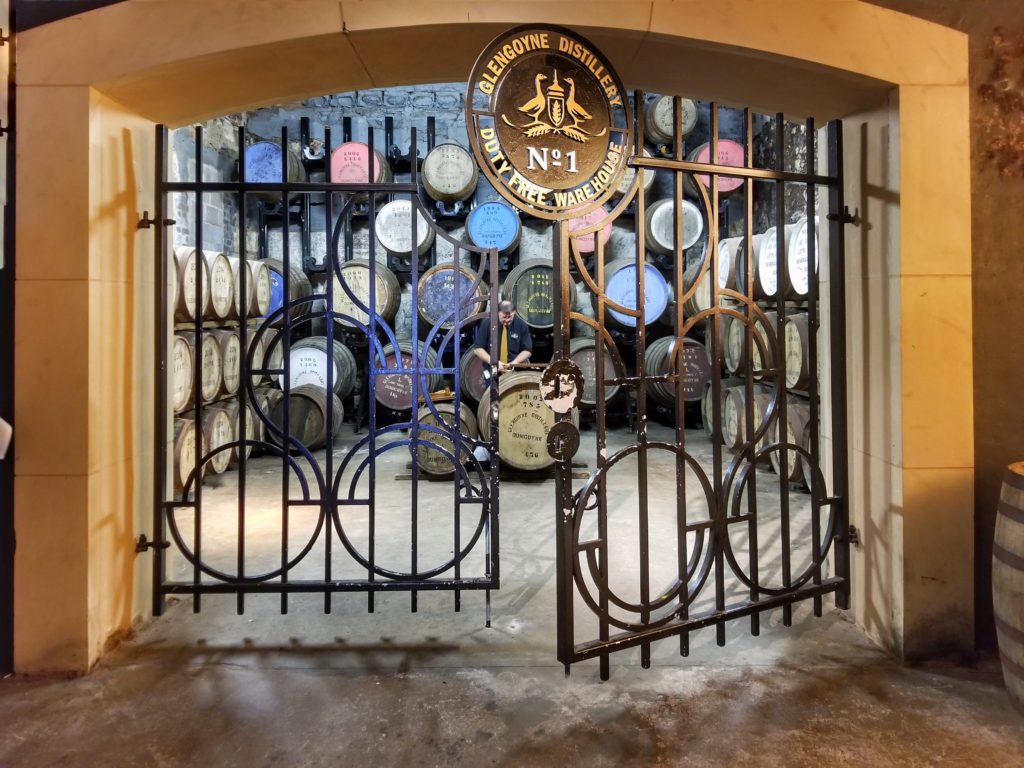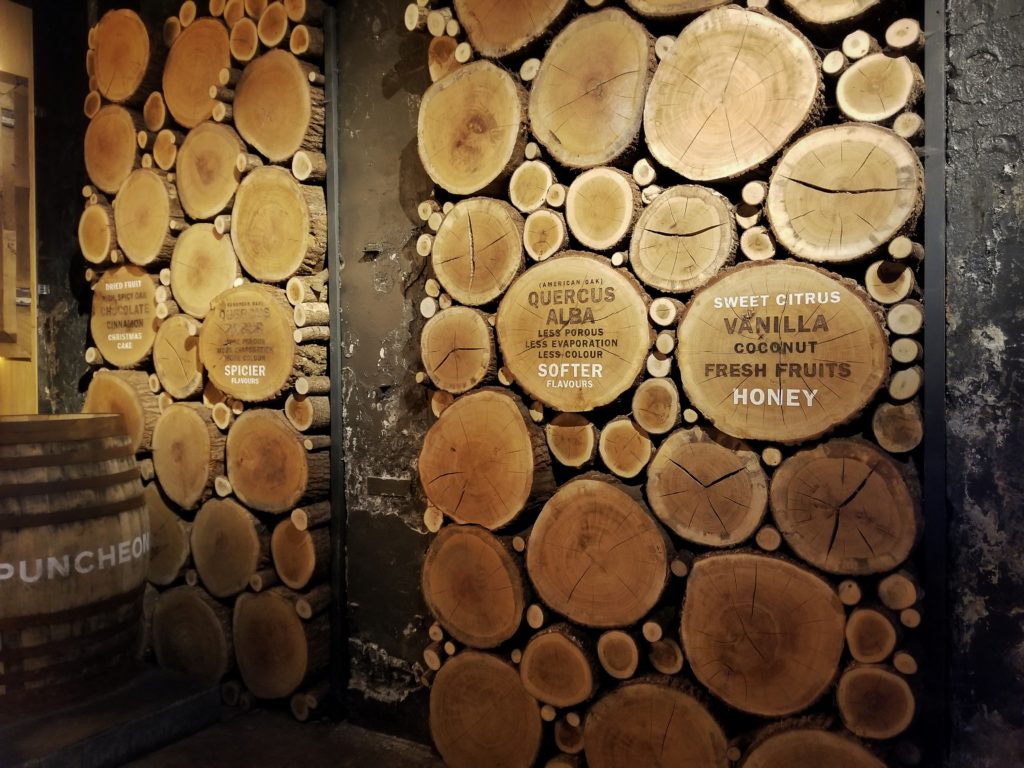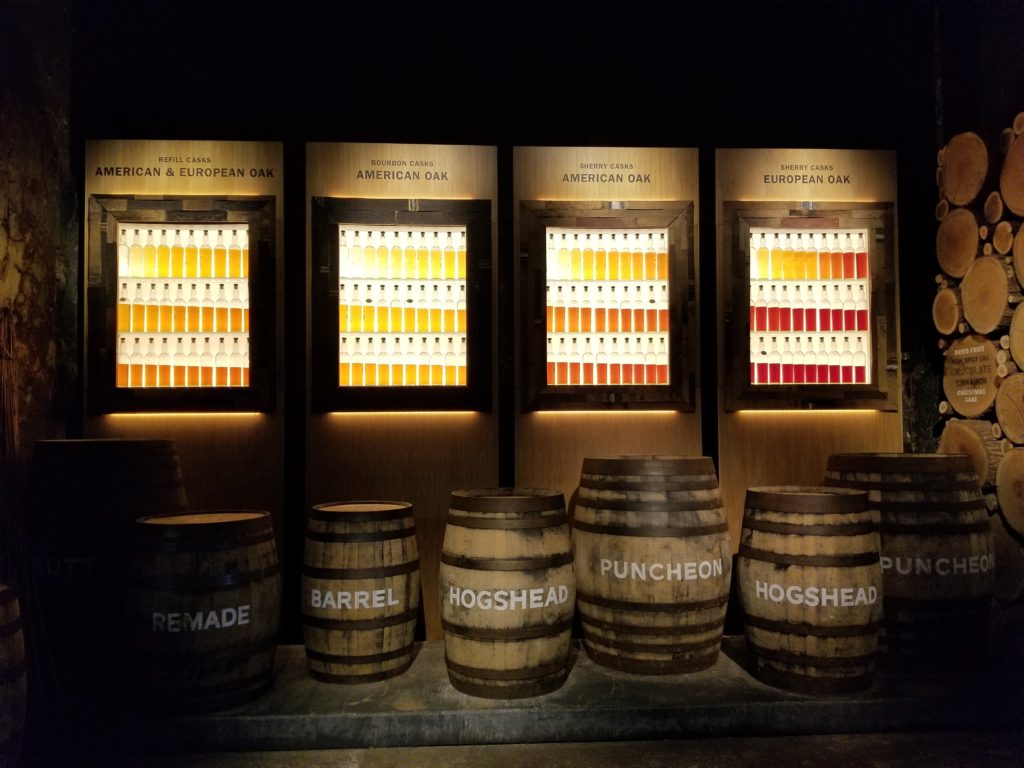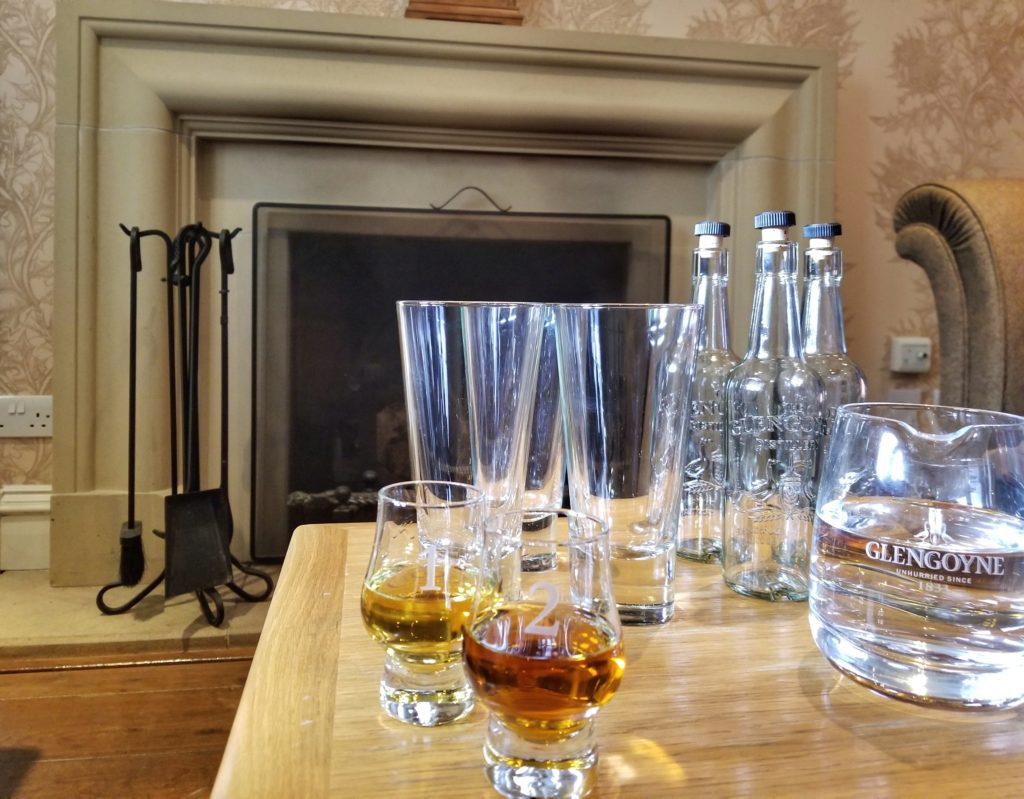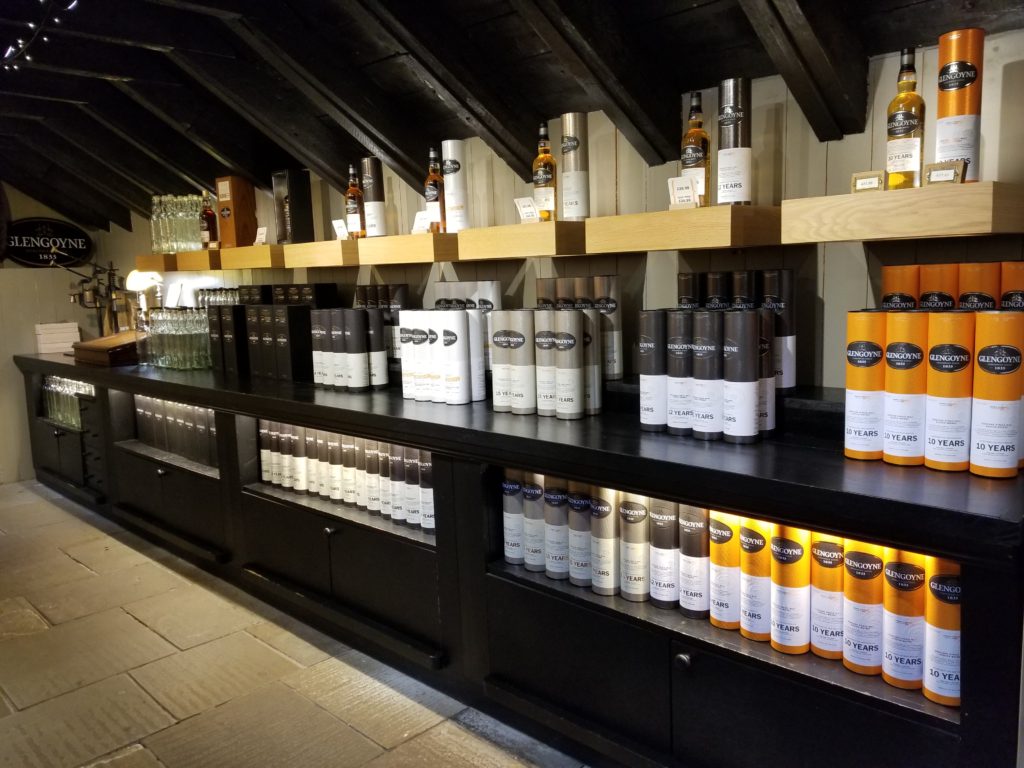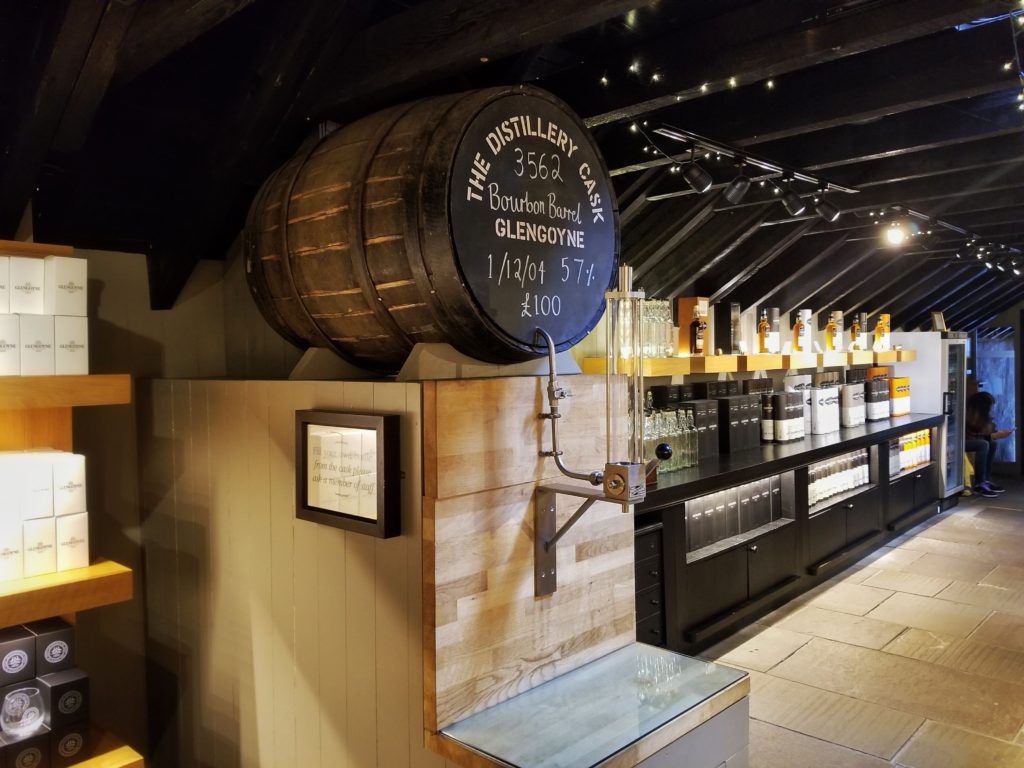Situated on the fault line between Highlands and Lowlands, Glengoyne is tucked away near Dumgoyne Hill. The hills in and forestry in the area provided great cover to operate illicit stills; Glengoyne came into official existence in 1833, although no written record exist prior to 1833, it is believed that, like many 19th century distilleries, distilling happened prior to becoming a legal entity.
In the 19th century the main water source for Glengoyne was a small waterfall in the back of the distillery near the hill, supplying 100L of water. Given the explosive expansion of the distillery in the 20th century Glengoyne now sources their water from Loch Carron. The barley is malted and delivered by Simpsons Maltings. Using a Porteus mill, 4 tons of barley are turned into grist for each mash, running 4 mashes per day, 7 days a week.
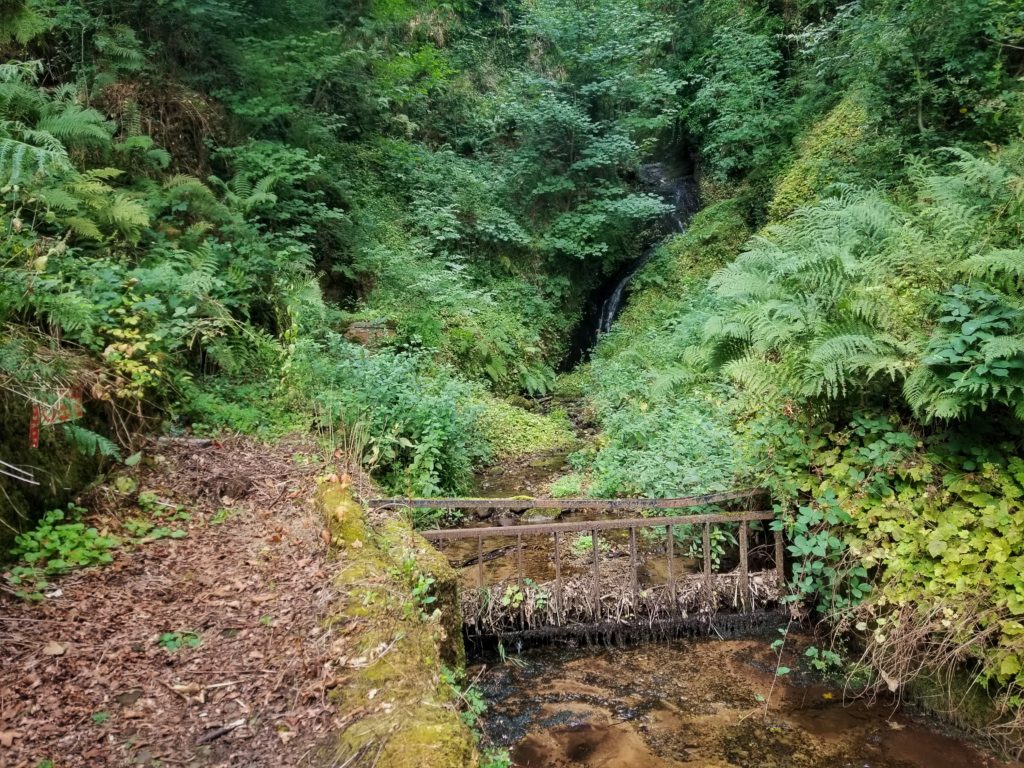
Glengoyne prides themselves on an unhurried spirit (hence the slogan, “Unhurried since 1833”) and a very laid back culture that is more about the art and passion of making great whisky, not just getting whisky on shelves. I saw this culture first hand when I asked our tour-guide, Katie, for details around the mash cycle. She introduced me to the mashman, Peter, and inquired about the wash process. He laughed a bit, rubs his brow, said “Aye, I don’t know off the top’me head. Hold on.” Peter scurries off, comes back with a binder full of notes to help answer my nerdy questions.
Now, thanks to Peter, I can tell you each mash goes through a 3 wash cycle, first being ~12,000L at 64C, followed by a second wash ~6,500L at 77C. The third and final wash of 12,000L at 90C will then be recycled as the first water for the next batch. Approximately 19,000L of wort are transferred to 1 of 6 Oregon pine washbacks. Two of the washbacks are brand new, and the other 4 have almost reached their life expectancy of 30-35 years. Once transferred to the washback, 60kg of yeast is added to the wort to ferment for 56 hours. Some longer fermentation periods are done for up to 110 hours.
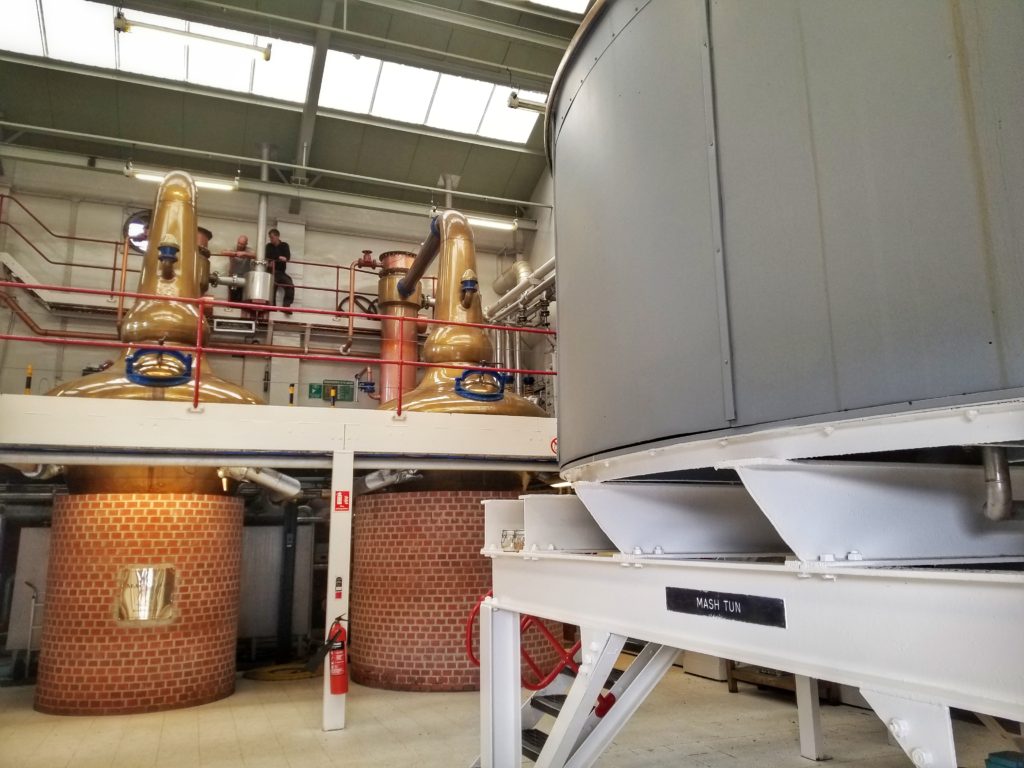
Glengoyne is notably a very environmentally friendly distillery, using 100% renewable energy, recycling the third water from the wash cycle, and also using the leftover grist for biofuel to power local homes. I suppose that means drinking Glengoyne is an environmentally friendly activity!
After fermentation, the wash still charged with 14,000L of 8.5% beer which yields roughly 5,500L of low wines at 25% ABV. A bit strangely, Glengoyne uses 3 stills, 1 wash and 2 spirit, instead of the more common 2×2 configuration. Katie explained that, paying back to the slogan, “Unhurried since 1833”; the distillery uses 2 spirit stills to split the second distillation to gain more copper contact and slow the process down to make a cleaner and lighter spirit. The heart of the distillation is run for 3 hours, and then filled into casks at 63.3%.
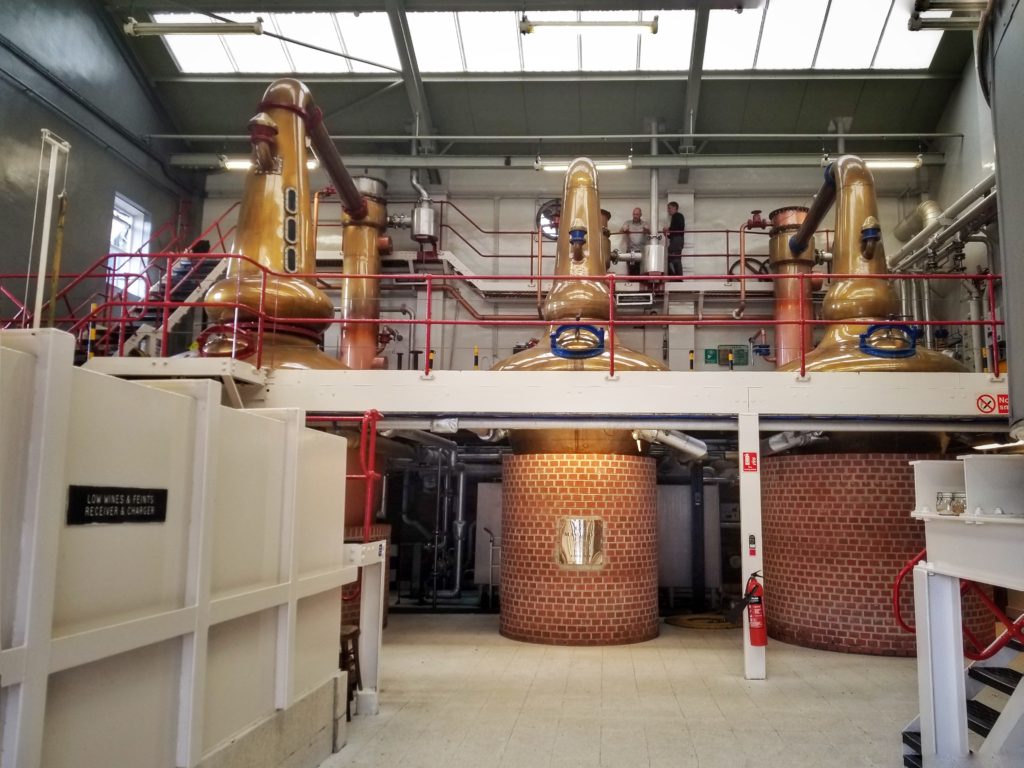
Glengoyne is the only distillery in Scotland stretched across two regions, which has created some debate in the community as to whether Glengoyne is a highlands or a lowlands malt whisky. Glengoyne is distilled in the highlands, yet just across the street in the lowlands is the warehouse where the spirit is matured.
On the highlands side of the road is the No. 1 Duty Free warehouse, where I got to fill my Glencairn with a sample using a traditional whisky dog (a copper tube attached to a copper or brass chain). The very rudimentary whisky dog was used by distillery workers in the 1900s to pilfer whisky from aging barrels, and could easily be dropped in the bunghole if somebody walked in. Several casks from the 1900s that have been emptied have been known to rattle like loose change from all the whisky dogs in the bottom of the cask.
In the No. 1 Duty Free warehouse we saw the different types of casks and wood Glengoyne uses and learned how they affect the character of the whisky. Glengoyne primarily uses sherry casks, and began using bourbon casks about 20 years ago.
After filling our Glencairn’s with our samples, we walked back to the visitor center where we began our tasting. First up was Cask #3565, a 1st fill bourbon barrel (180L fill) distilled in December 1, 2004 with an ABV of 56.7% at the time of tasting (August 30, 2018). The bourbon barrel gave the whisky a fruity character, with lots of green apples, pears, spice, and vanilla.
The second dram was Cask #785, a first fill American oak Oloroso puncheon (476L fill) distilled June 5, 2002 with an ABV of 60.1% at the time of tasting (August 30, 2018). While the bourbon barrel dram was great, this dram was phenomenal. Extremely rich sherry influence with tons of fudge, toffee, espresso, and nuts. Having made my decision, we walked back to the No. 1 warehouse where I got to fill my own 20cL bottle of the Oloroso cask with the whisky dog.
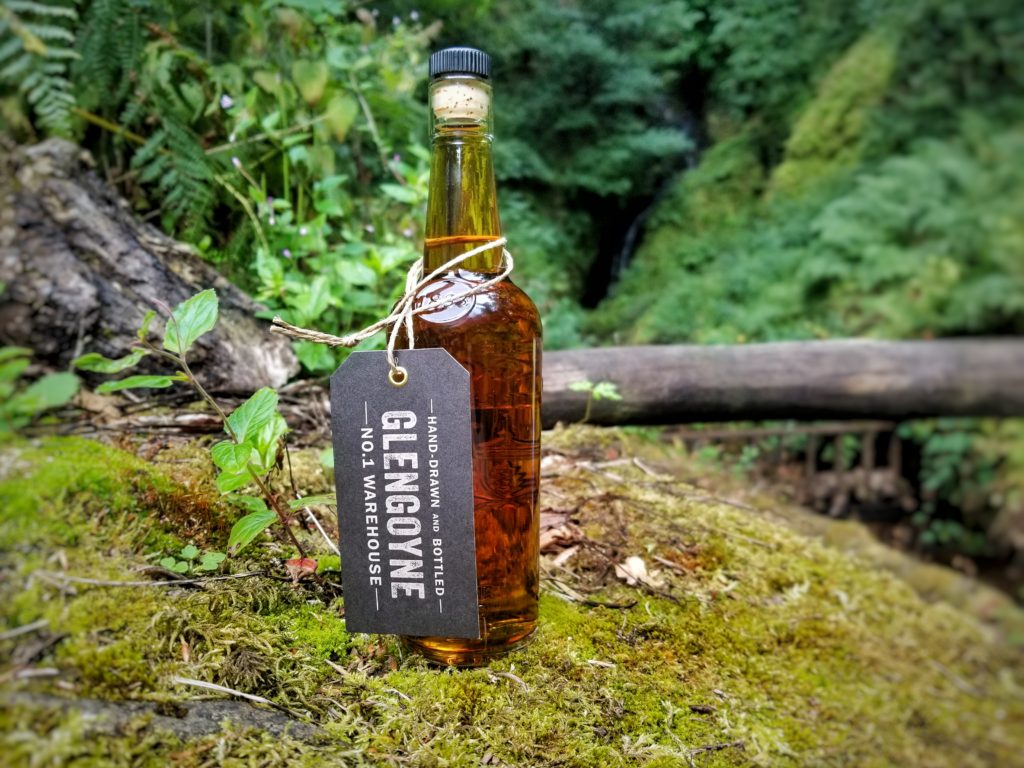
After the tour we ventured back to the gift shop where the full core range was available and another bourbon barrel distillery exclusive was available to fill yourself straight from the cask. Unfortunately the teapot dram wasn’t available, somebody please let me know when it’s back; I need a bottle!
Special thanks to Shilton Almeida of Paul John for introducing me to Alan Wardrop at Glengoyne, thank you to Alan for setting me up with the tour, and thank you to Katie Burns at Glengoyne for the great tour and answering my 873 questions.
Glengoyne
Founded: 1833
Region: Highlands, Scotland
Owner: Ian Macleod Distillers limited
Production: 1,200,000 LPA
Capacity: 2,000,000 LPA
Mash tun: Semi-lauter mash tun
Washbacks: 6 Oregon pine (19,000L capacity)
Stills: 1 wash (16,520L Cap.), 2 spirit (5,000L Cap.)

